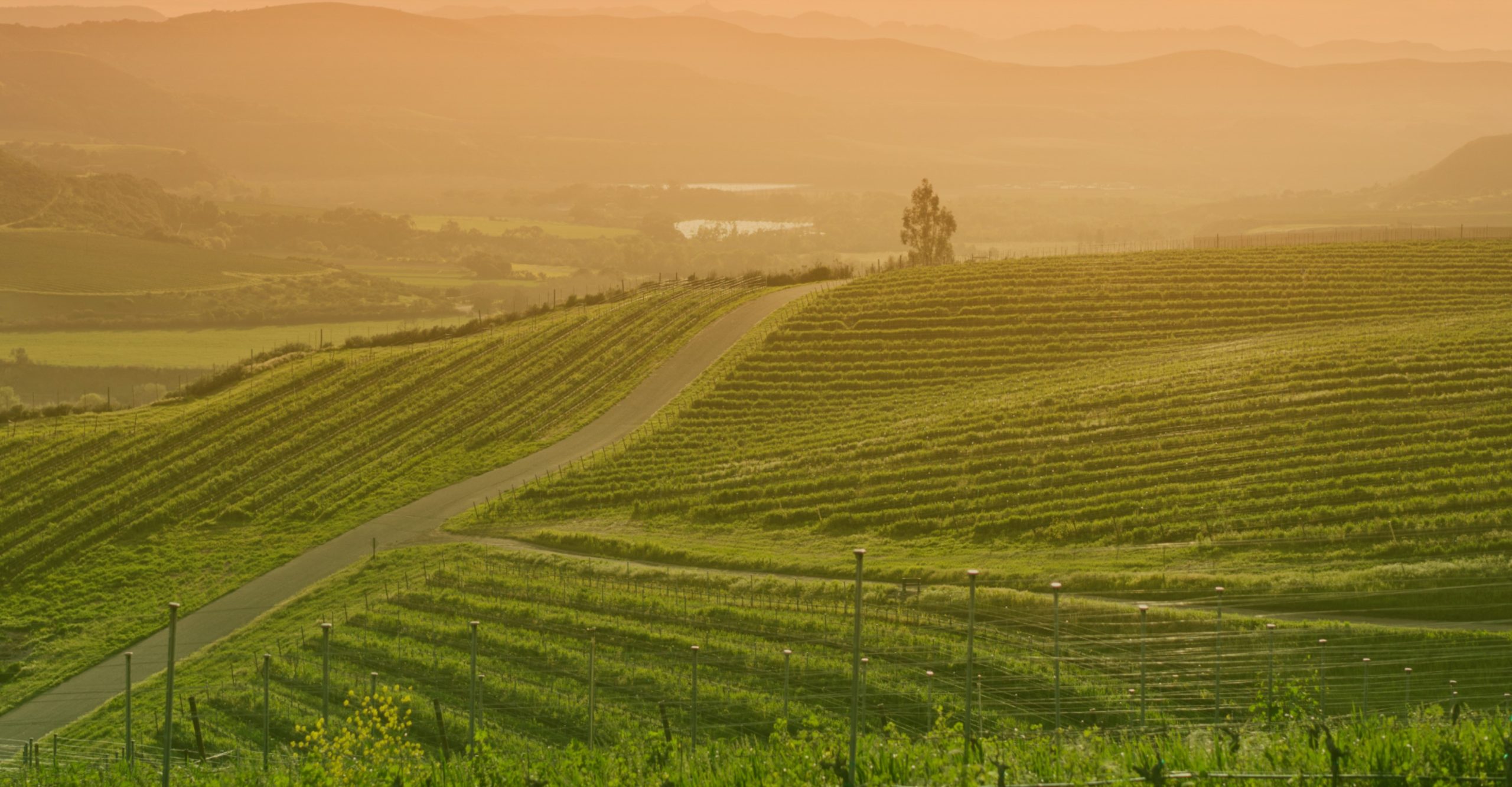





Flowers and Mountains
Uttrakhand
of organic and sustainably grown crops like
Rajma, Wheat, Paddy and more which
are then fine-graded and checked for quality
assurance for distribution.


Dehradun project of Nature Bio Foods is in the land of the Gods, Uttarakhand, lies the serene valley of Dehradun, from where our farmers produce a wide variety of crops and grains.
The Dehradun Project is located in Vikasnagar, district Dehradun in Uttarakhand, India. It is the perfect amalgamation of city life and village life with both cultures living in its heart simultaneously. The people and farmers of Dehradun are kind and hard-working and lead simple yet inspiring life. Since they are at the heart of our business, we are happy to be able to affect their lives with our initiatives and practices of organic farming.
TRACEABILITY CODE: PABA201521BV
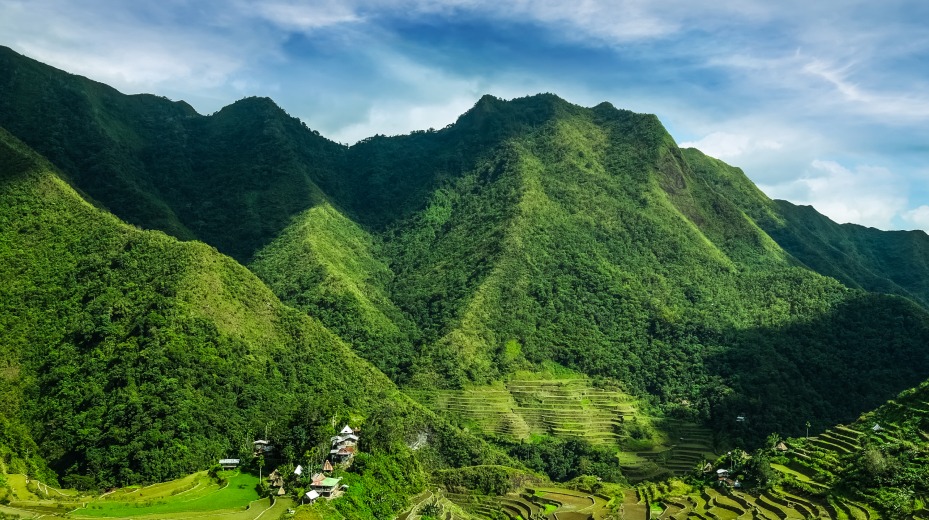

The Dehradun Project is located in Vikasnagar, district Dehradun of Uttarakhand, India. It is situated 2 to 30 km away from sub-district headquarter Vikasnagar and 2 to 40 km away from district headquarter Dehradun. It has an average elevation of 452 metres (1,483 feet).] Vikasnagar lies along the river Yamuna, nearly 40 km northwest of Dehradun, the capital of Uttarakhand.
Doon Valley Coordinates – 30.345°N 78.029°E


Bio Suisse is the Swiss organic market’s private label and the owner of the registered trademark Bud. Its standards are private law guidelines and exceed the minimum legal requirements in essential respects (EU-Eco-Regulation 834/2007 or equivalent).

Leo, quam commodo libero nulla mi. Gravida cursus in eget adipiscing amet risus odio. Orci adipiscing et, ultricies non enim. Pharetra, ornare est netus morbi integer nec nunc. Molestie viverra leo arcu fusce magna porta neque, mi. Sed eu rutrum augue porttitor pulvinar morbi fermentum semper. Purus etiam id non tincidunt nulla amet. Lobortis fusce mauris, elit etiam adipiscing pellentesque. Orci neque, quis sit nulla pretium hac laoreet nec urna.

Naturland promotes organic production and social recognition of organic agriculture worldwide. Their work enables them to contribute to protecting the environment and its resources, ensuring food security, and improving people’s living conditions. Naturland certification is attainable even for low-acreage farmers, they also work with producer associations that incorporate numerous individual producers. In this case, a producer association or ‘cooperative’ counts as one Naturland member.

Organic products are grown under a system of agriculture without the use of chemical fertilizers and pesticides with an environmentally and socially responsible approach. This is a method of farming that works at grass root level preserving the reproductive and regenerative capacity of the soil, good plant nutrition, and sound soil management, produces nutritious food rich in vitality and has resistance to diseases.
India is bestowed with a lot of potential to produce all varieties of organic products due to its various agro-climatic conditions.

The KRAV label has grown out of active interest to protect, nature, people, animals, and the future. Their goal is to contribute to sustainable and confidence-inspiring production of high-quality food in the long-term. Since 1985 KRAV has pursued the development of organic and sustainable food production, and thousands of actors in the food production chain have come together to support our goal. We are now Sweden’s most well-known environmental food label – 98% of all consumers are familiar with the KRAV label.

Biodynamic farming is a regenerative and holistic approach to agriculture, gardening, and food production and processing. It has higher standards than organic agriculture because it looks at the bigger picture and tries to put back more than it extracts.
Setting very high standards for organic farming since 1924. Developing from lectures given by scientist and philosopher, Rudolf Steiner, the pioneers in biodynamic farming has been developing this modern and future-oriented cultivation method ever since.

Fairtrade’s approach enables farmers and workers to have more control over their lives and decide how to invest in their future.
As a leader in the global movement to make trade fair, Fairtrade supports and challenges businesses and governments and connects farmers and workers with the people who buy their products.
Small-scale farmers and workers are among the most marginalized by the global trade system. At Fairtrade, they are at the heart of everything we do. Unique among certification schemes, producers have an equal say in how Fairtrade is run and are included in all our decision-making.

Doon valley is well known for its rich biodiversity and pleasant climate. It is possibly one of the nicest cities in India and is situated in the heart of the Himalayas and the Shivalik Range. Situated in the north-western Himalaya and is expanded over an area of about 2003 km. square with an average elevation of 640m AMSL, it has unique physical features and abundant natural resources.
It is surrounded by Lesser Himalaya in the north, Shivalik hills in the south, the river Ganga in the east, and by the river Yamuna in the west and has a salutary climate enjoyable throughout the year.
Dehradun can be described by many features of its topography including raging rivers, lush forests, and enthralling valleys. This city, located at an elevation of 3350 meters, can be described as “heaven on Earth” because of its surrounding beauty.

The soil in both the blocks of district Dehradun is quite fertile, especially near the rivers. At few places, clay percentage is more, otherwise, the soil is good for all kinds of crops.
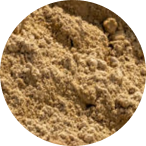
Soil Type 1
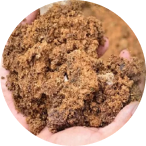
Soil Type 2

Soil Type 3
The Dehradun lies about 600m above sea level. The climate is warm and temperate. The average annual temperature is 20.4 °C | 68.8 °F. About 1441 mm | 56.7 inches of precipitation falls annually.
Minimum

6°C
(Dec-Jan)
Maximum

35°C
(May-June)
Minimum

27°C
(Dec-Jan)
Maximum

90°C
(May-June)
When compared with winter, the summers have much more rainfall.
South West
Mansoon
297 mm
(June-Sep)
North West
Mansoon
95 mm
(Oct-Jan)
Summer
Rains
15 mm
(Mar-May)
There are mainly three seasons.

Summer
(Mar-June)

Rainy
(July-Sep)

Winter
(Oct-Feb)
Regarding farm water availability and conditions. both surface and subsurface sources are being developed for irrigation purposes in the project. Canals and guls have been constructed by the farmers as well as government agencies from the perennial rivers/ springs/ seasonal rivulets/ gadheras. Canals in District Dehradun run for a length of 786 km. There are four main canal systems namely Bijapur, Rajpur, Kalanga and Jakhan. These canal systems were developed during the British period and are now being maintained by the state irrigation department. The Rajpur canal system, Jakhan canal system, Kalanga canal system, and Bijapur canal system have 7,5,7 and 10 canals, respectively. Sub surface water is developed through tube wells. There are 118 functional Irrigation tube wells in District Dehradun (as of 31.3.2009). Most of these tube wells are located in the Doon Valley tapping the Doon Gravels. Besides the canals and tube wells, there are other irrigation practices like pump sets, hydrum, hauz, and tanks.
The farmers of Dehradun, Uttarakhand are simple and hardworking people, who are also very co-operative with the project officials.
Some farmers still follow old practices of farming in villages dominated by Garhwali families. Some of them are also keen about learning new techniques in farming. Most of the farmers in the Dehradun valley are now practicing organic farming practices because of several organizations as well as Govt of Uttarakhand initiatives. Farmers have adopted organic farming practices nicely.

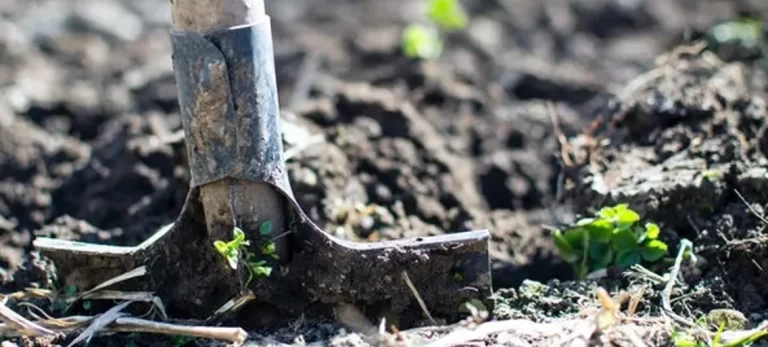

Growing conditions in Doon valley are favorable for most of the Kharif and Rabi crops, especially for Dehraduni Basmati and Rajma due to favourable environment. Dehraduni Basmati enhance aroma and taste and is very popular worldwide.
Rainfall is above normal up to 2000mm per year. Irrigation is common in the low-lying areas whereas rainfed agriculture prevails in the higher elevations of the valley.
The farmers of this project are expert in production of the paddy crop, especially the Dehraduni Basmati, Basmati CSR-30, and Kasturi Basmati. Farmers has been growing Dehraduni Basmati (Type-3 for almost 100 years.)
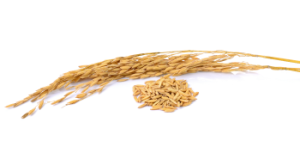
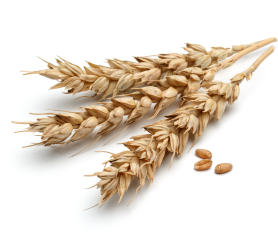

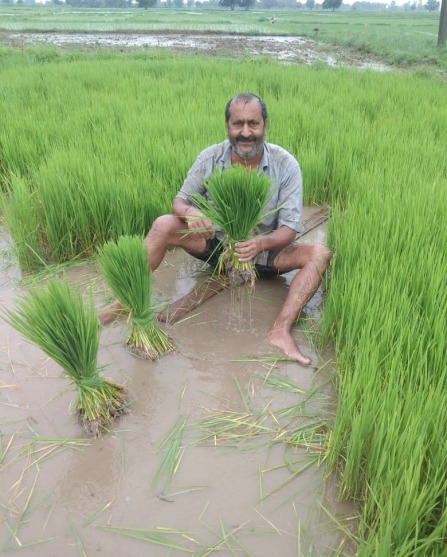
Yellow stem borer is a serious pest of rice, and its incidence is noticed in the nursery, planting to mid tillering, and panicle initiation stages. Heavy infestation results in 40-60 percent yield loss. Symptoms of damage include the presence of brown-colored egg masses near leaf tips in the nursery and early transplanted plants.
One of the control measures is to clip off the tip of the seedlings before transplanting and collect and destroy stem borer egg masses present on the transplanted young rice plants.
Team NBFL conducted 100+ field demonstrations of clipping the paddy seedlings before transplanting and collecting and destroying stem borer eggs.


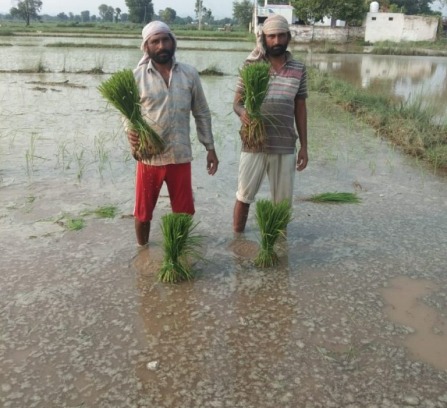
Benefits Of Line Sowing Of Paddy
A scientific study revealed that the average increase in paddy yield was about 20 % under the line sowing method over the broadcast method of paddy planting. The per hectare net return was more under-line sowing as compared to the broadcasted method of sowing.
Also, line sowing is more effective due to easy intercultural operations like weeding, spraying, etc., and uniform plant stand.
Team NBF demonstrated this technology at 100 farmers’ fields.
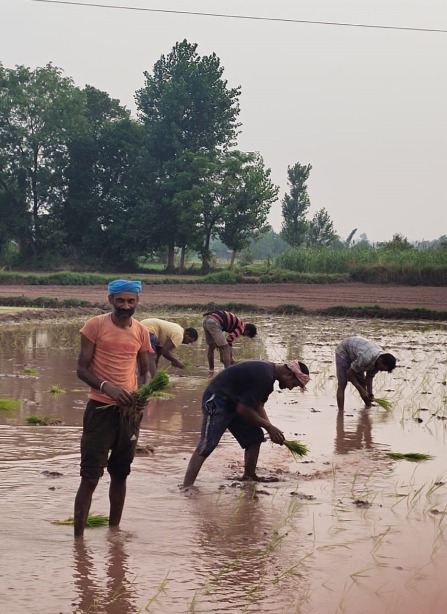


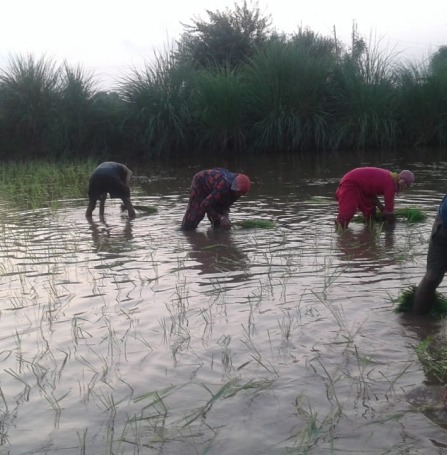
Technology Demonstration & Training
Pheromone Traps for insect management
Waste Decomposer for crop residue decomposing & quality compost making
Vermi Compost units
Botanical Pesticides
Contamination control in produce
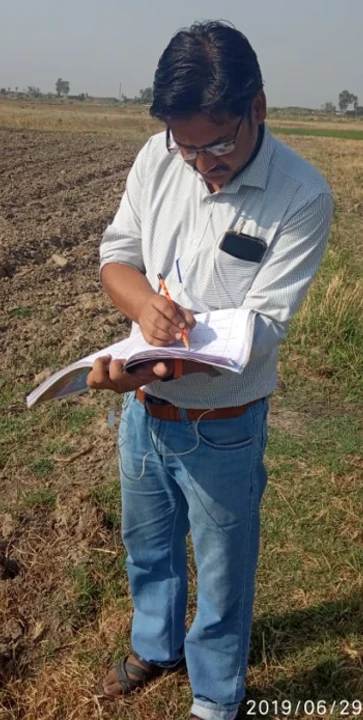

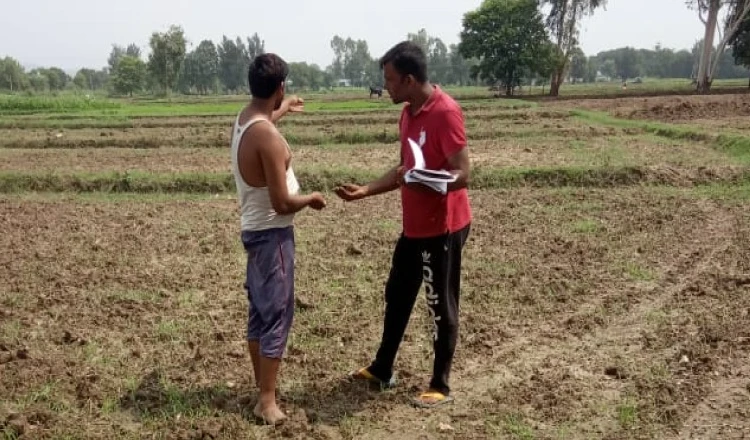

Demonstration Of Pheromone Trap
Pheromone traps are often used to catch certain species of insects and in these traps, a pheromone attractant is used to lure insects. Once attracted, a catching bucket captures the insect.
Pheromones are sex attractants that attract only males of various species of insects. These types of traps are not used to control insects but instead are used to detect the presence of pests, for monitoring, or to determine the first appearance of a pest in an area.
To manage the yellow stem borer of the paddy team NBFL demonstrated this trap at farmer’s fields.

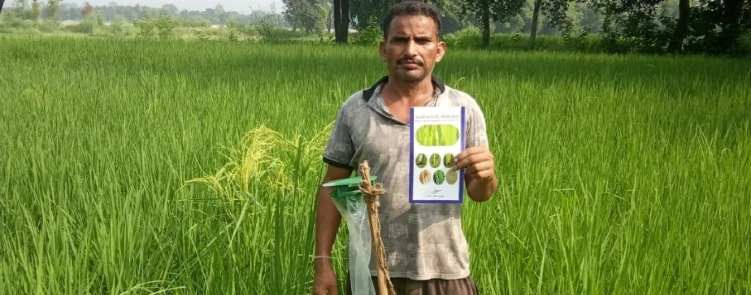
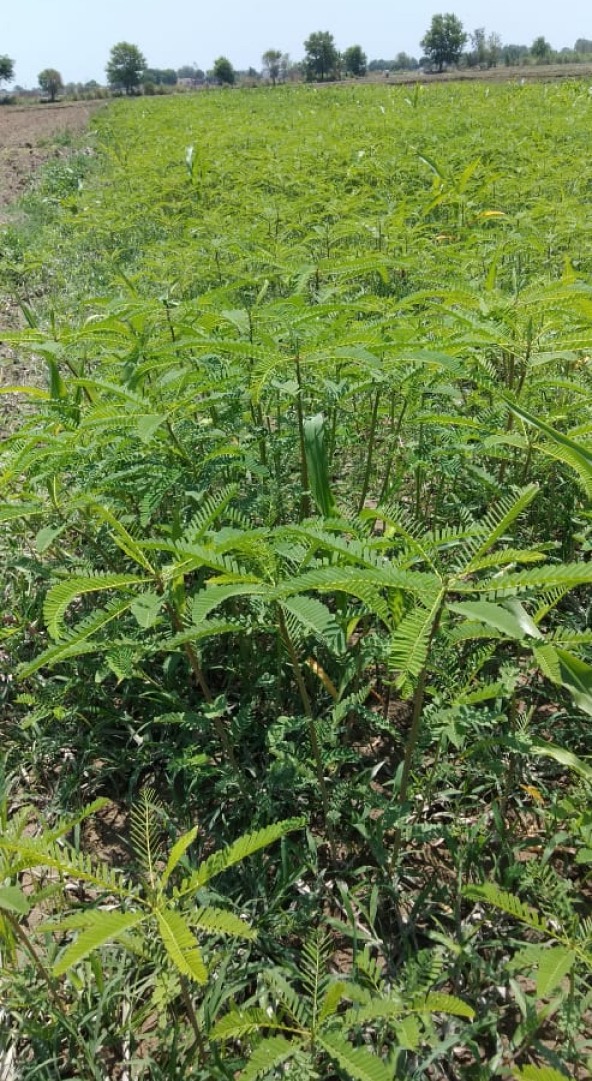
Weed Suppression
Green manure crops grow quickly and their very leafy growth smothers weeds. It is like a living mulch as it suppresses weeds and retains moisture in the soil. It is good practice to make sure the soil is weed-free first. That is why they are very important when areas are left fallow especially good in winter.
Demonstration Of Pheromone Trap
Improving Soil Structure
Green manures have deep penetrative roots that as they grow open up the soil. This is an advantage on heavy soils as allows drainage to occur more freely and organic matter to be left in the soil on lighter soils the particles of soil can bind together better so they can hold water better and leaves the organic matter in the soil.
Adding Nutrients
Leguminous green (Sesbania) manures absorb nitrogen from the air and fix it in root nodules on their roots so that when it is dug in it becomes available to the following crop. Specific soil bacteria are required to be present but they are usually present in healthy soil. Nitrogen is required by plants as it encourages healthy stem and leaf growth.

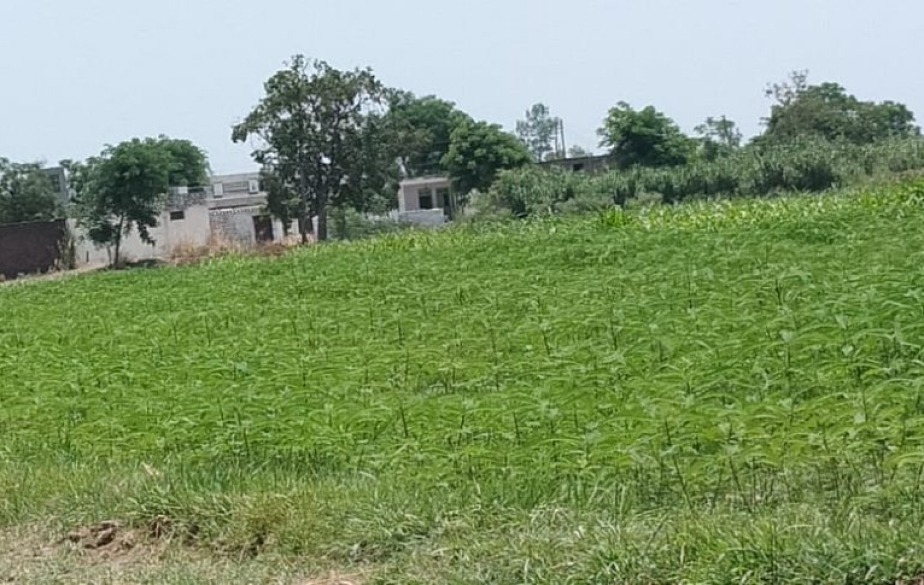
Technology Demonstration & Training
Pheromone Traps for insect management
Waste Decomposer for crop residue decomposing & quality compost making
Vermi Compost units
Botanical Pesticides
Contamination control in produce


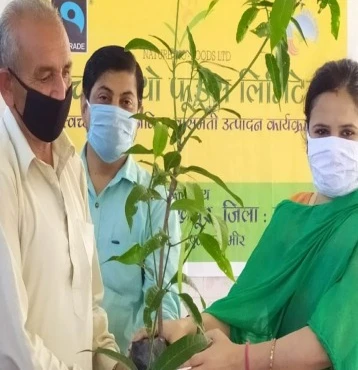

Soil Sampling & testing
A soil test is important for several reasons: to optimize crop production, to protect the environment from contamination by runoff and leaching of excess fertilizers, to aid in the diagnosis of plant culture problems, to improve the nutritional balance of the growing media and to save money and conserve energy by applying only the amount of fertilizer needed. Pre-plant media analyses indicate potential nutrient deficiencies, pH imbalance, or excess soluble salts. This is particularly important for farmers who grow organic and use their own produced FYM.
In support of the department of agriculture Jammu, we have conducted soil analysis before the sowing of Rabi and Kharif crops every year and based on lab results recommend nutrient management practices to our growers.

Dehradun can be reached out to with ease from Uttarakhand and other parts of the country, especially northern states by all three means of transportation.

By Train
Dehradun has great connectivity via rail to most major parts of the country. Cities like Mumbai, Delhi, Chennai, Amritsar, Kolkata, Indore, Varanasi, Ujjain, Gorakhpur, etc. are well connected to Dehradun.

By Road
Private and public buses are a popular means to reach Dehradun via Delhi. Buses from major parts of the north region travel to Dehradun.

By Air
The Jolly Grant airport situated at the outskirts of the city is the best way to reach Dehradun by air. Flights from Delhi connect to Dehradun.

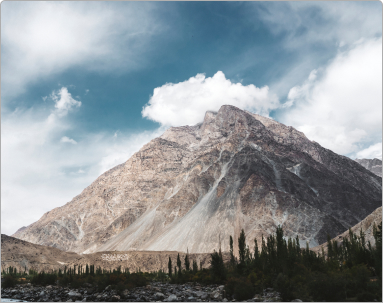

Mountain
It has an average elevation of roughly 640 meters (2,100 feet).
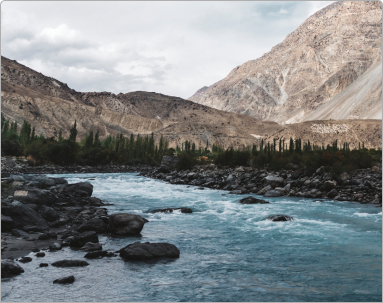

River
Dehradun is located at the foothills of the Himalayas on the bank of river Song.
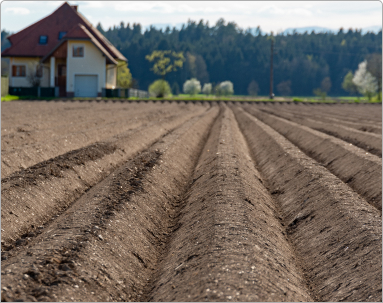

Soil
The soil in both the blocks of district Dehradun is quite fertile especially near the rivers and consists of majorly sand, silt, and clay.
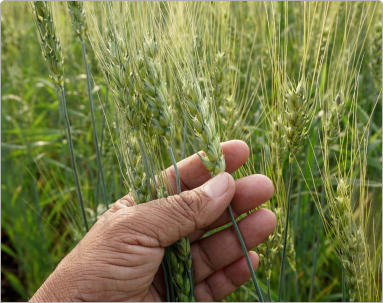

Crop
Horticulture crops include Basmati, Sarbati, Kasturi rice, Naurangi Dal, Wheat, Rajma, Oats, Peas
Economic
Women Employment Generated
1200+ | ||
Average Farmer's Income Growth
20% | ||
Annual Employment Growth
9% | ||
Social
Schools Constructed
10+ | ||
Toilets Constructed
100+ | ||
Daily Meal Distributed
10,000+ | ||
Sanitization kits Distributed
10,000+ | ||
Blood Domination Camps
100+ | ||
Environmental
Trees Planted
99,978+ | ||
Sanitation Facilities Provided
100+ | ||
Solar Lamps Installed
1,000+ | ||
Gallon Rain Water Harvested
15,000+ | ||
KGs Plastic Waste Recycled
9.000+ | ||

Impact by our Farmers
Farmers use a variety of methods to improve soil fertility, including crop rotation, cover cropping, reduced tillage, and application of compost. By reducing fuel-intensive tillage, less soil organic matter is lost to the atmosphere. This has the added benefit of carbon sequestration, which reduces greenhouse gases and helps reverse climate change. Reducing tillage may also improve soil structure and reduce the potential for soil erosion.

Difference our People are Making
Multiple Processes starting Conversion of land from conventional management to organic management and Management of the entire surrounding system to ensure biodiversity and sustainability of the system. Also, Crop production with the use of alternative sources of nutrients such as crop rotation, residue management, organic manures, and providing complete biological inputs.
Management of weeds and pests by better management practices, physical and cultural means is supervised and managed by our teams thus being an integral contributor and impact to the cause.

Contribution by our Customers
Consumers’ attention to food safety issues and environmental issues has increased overwhelmingly in recent decades because of their increased concern about their own health, the environment’s health, and the crises and emergencies reported worldwide. Once the only option, organic agriculture has always been a production option followed by at least a few farmers all over the world, and consumers are directly contributing to the overall health of the planet and creating an impact by simply consuming.
Dehradun is mentioned in an old Hindu mythology scripture as a part of an area named Kedarkhand, which is Lord Shiva’s residence. A number of mythical traditions suggest that Dehradun is mentioned in the popular epic Ramayana. The valley of Dehradun is also known as ‘Dronanagari,’ after the mythical Royal guru Dronacharya from the epic Mahabharata. He’s thought to have been born and raised in Dehradun.
This location was known as “Sudhanagara” in the seventh century and was reported by the Chinese traveller Huen Tsang.
Dehradun gets its name from the fact that in 1676, Baba Ram Rai, the eldest son of the Seventh Sikh Guru Har Rai, established his “Dera” (camp) in the “dun” (valley). This ‘Dera Dun’ evolved into Dehradun as we know it today.
Dehradun was invaded by several rulers of the Mughal empire during their campaigns into India. In 1806, the Nepalese King Prithvi Narayan Shah united many of the Indian territories and Garhwal became a part of Nepal for a brief period until the British East India Company went on a war from 1814 to 1816. The war ended with the signing of the Treaty of Sugowli where the British got Dehradun in 1816.
Following the first Anglo-Afghan War, the Afghan Emir Dost Mohammad Khan (Emir of Afghanistan) who was banished by the British to Dehra Dun brought with him the famed Dehraduni Basmati from Kunar Province in Afghanistan, which is still considered a valley delicacy.
The valley is also known to have some of the premier and renowned institutions of India. Some of these institutions are: Botanical Survey of India (BSI), ICAR – Indian Institute of Soil and Water Conservation, Forest Survey of India (FSI), Indian Council of Forest Research and Education (ICFRE), Indian Military Academy (IMA), Oil and Natural Gas Corporation Ltd. (ONGC), Indian Institute of Petroleum (IIP), Indian Institute of Remote Sensing (IIRS), Indira Gandhi National Forest Academy (IGNFA), Survey of India (SoI), Wild Life Institute of India (WII) and Zoological Survey of India (ZSI).
The population of Dehradun is quite large and diverse comprising of a multitude of cultures including the Garhwalis, Kumaonis, Nepalese, Sindhis etc. The majority of the population of Dehradun communicate in Garhwali and Hindi. Some also speak Punjabi, English, Nepalese and Urdu.
The population of Dehradun is composed of various ethnic groups such as Indo-Aryan which comprises 72% of its total population, Dravidian which comprises 25% of its population and the rest consists of 3% of the total population. A majority of people follow Hinduism (82%). Other religions practised by the population of Dehradun are Islam (11%), Christianity (2%), Sikhism (2%) and Buddhism (0.7%).
Culture
Dehradun has a unique and amicable culture that balances spirituality and tourism. People of this historical, religious, and beautiful city wear traditional dresses. You may find women wearing ghagra choli, lehengas, sarongs, Bandhani sarees, burkhas, long skirts and some modern outfits as well. The men can too be found wearing traditional outfits such as dhoti, lungi, and kurta-pajamas, and modern clothes like jeans, pants, shirts etc.
Local Festivals & Art
The best way to know more about a city is to attend the cultural festivals of the city. Various festivals are celebrated in Dehradun, some of them are the Jhanda Fair, Tapkeshwar Fair, Bissu Fair and Uttarakhand Mahotsav. The temples are the best way to come across the art, culture and architecture of the place.
Flavours of Dehradun
The unique flavour and the delicious cuisine make this city even more attractive. The local cuisines of Dehradun include dishes such as Kandalee ka Saag (a type of green vegetable), Bal Mithai (chocolate desert), Kulath Phanu (a delicacy made with rice and pulses), Kaafli (fruit), Singodi(milk-based desert), Sani hui Muli and Nimbu(Made from local huge sized lemons). One must taste the local food of Dehradun.